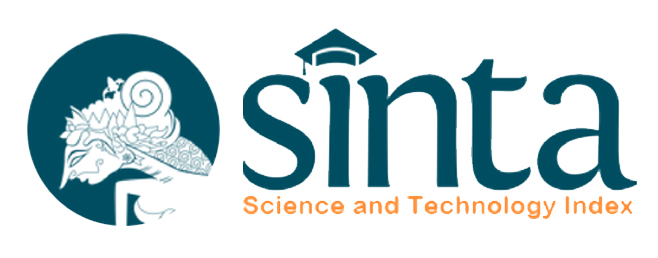Tahlīl Riwāyah Salāmullāh ‘Ala ‘Ainaik li Muhammad al-Muslim (Dirāsah Simiyāiyyah Roland Barthes)
Abstract
Keywords
Full Text:
PDFReferences
Pradoko, A.M. Susilo. (2017). Paradigma Metode Penelitian Kualitatif. Yogyakarta: UNY Press.
Hornberger, Nancy H, and David Corson. (1997). Research Methods in Language and Education. Rotterdam: Kluwer Academic Publisher.
Sarwono, Jonathan. (2006). Metode Penelitian Kuantitatif dan Kualitatif. Yogyakarta: Graha Ilmu.
Siyoto, Sandu dan M. Ali Sodik. (2015). Dasar Metodologi Penelitian. Yogyakarta: Literasi Media Publishing.
Rinaldi, Sony Faisal dan Bagya Mujianto. (2017). Metodologi Penelitian dan Statistik. Jakarta: KemenKes RI.
Soegiarto, Eddy. (2018). Metodologi Penelitian dan Penulisan Ilmiah. Jakarta Selatan: INDOCAMP.
Bailey, Kenneth D. (1978). Methods of Social Research. New York: Cambridge University Press.
Kaelan. (2012). Metode Penelitian Kualitatif Interdisipliner Bidang Sosial, Budaya, Filsafat, Seni, Agama, dan Humaniora. Yogyakarta: Paradigma.
Surahman, Mochammad Rachmat, dan Sudibyo Supardi. (2016). Metodologi Penelitian Komprehensif. Jakarta: Pusdik SDM Kesehatan.
Suwendra, W. (2018). Metodologi Penelitian Kualitatif dalam Ilmu Sosial, Pendidikan, Kebudayaan dan Keagamaan. Bali: Nilacakra.
Suprayogo, Imam dan Tobroni. (2001). Metologi Penelitian Sosial-Agama. Bandung: Remaja Rosdakarya.
David, Matthew and Carole D. Sutton. (2014). Sosial Research: The Basics. California: Sage Publishing.
Priyono. (2016). Metode Penelitian Kuantitatif. Surabaya: Zifatama Publishing.
Radjab, Enny dan Andi Jam’an. (2017). Metodologi Penelitian Bisnis. Makassar: UM Makassar.
Piliang, Yasraf Amir. (2012). Semiotika dan Hipersemiotika: Kode, Gaya & Matinya Makna. Bandung: Matahari.
Mcquail, Dennis. (2011). Teori Komunikasi Massa. Jakarta: Salemba Humanika.
Semi, M. A. (2012). Metode Penelitian Sastra. Bandung: CV Angkasa.
Santosa, P. (1993). Ancangan Semiotika dan Pengkajian Sastra. Bandung: Angkasa Bandung.
Fiske, J. (2007). Cultural and Communication Studies Sebuah Pengantar Paling Komprehensif. Yogyakarta: Jalasutra.
Sobur, A. (2009). Semiotika Komunikasi. Bandung: PT Remaja
DOI: https://doi.org/10.18860/jali.v3i1.14096
Refbacks
- There are currently no refbacks.
Copyright (c) 2021 Journal of Arabic Literature (JaLi)

This work is licensed under a Creative Commons Attribution-ShareAlike 4.0 International License.
Member of:
Indexed by:
_(2).jpg)
![]()


Editorial Office:
Arabic Language and Literature Programme
Faculty of Humanities
Universitas Islam Negeri Maulana Malik Ibrahim Malang
Jalan Gajayana 50 Malang, Jawa Timur, Indonesia 65144
Email: jali@uin-malang.ac.id / jali.uinmaliki@gmail.com
Phone: +62 (0)341 551354
This work is licensed under a Creative Commons Attribution 4.0 International License.
View My Stats



